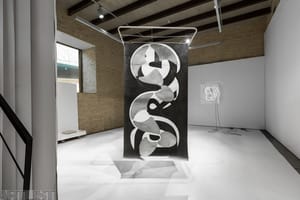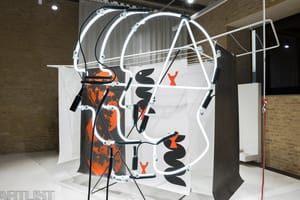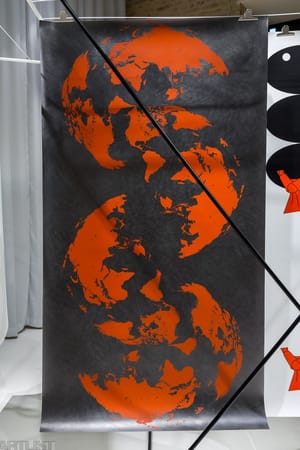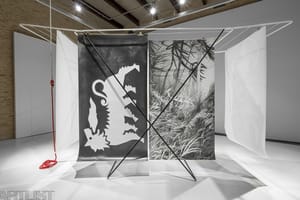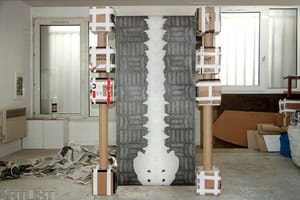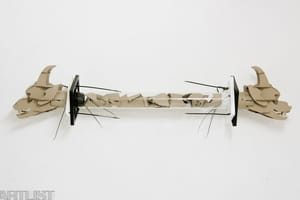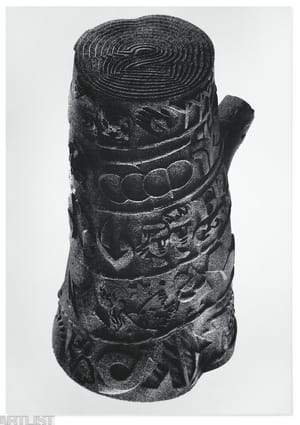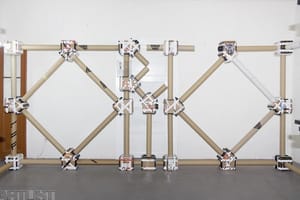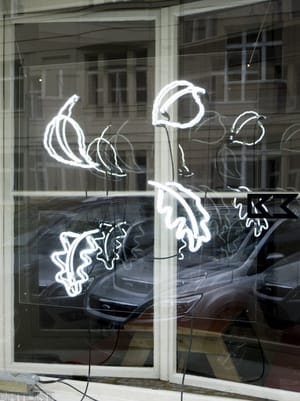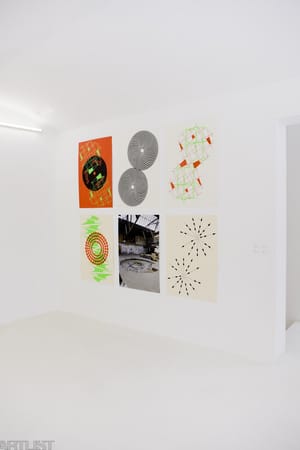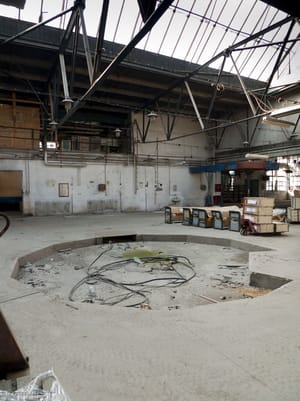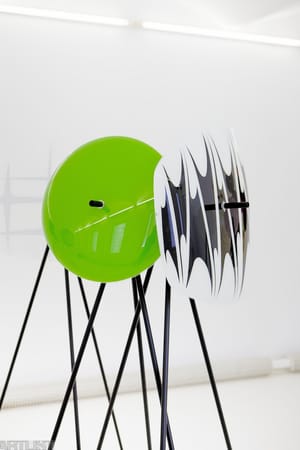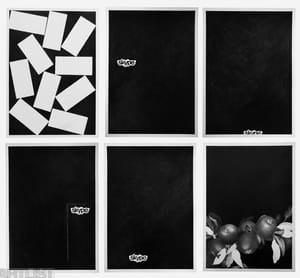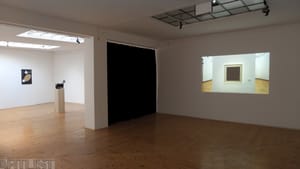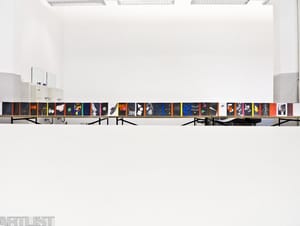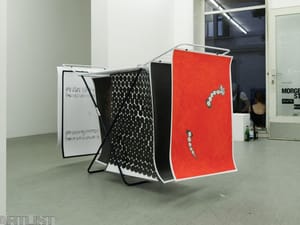- First Name
- Jan
- Surname
- Brož
- Other names - aliases
- Parallel Practice Std. (PP)
- Born
- 1988
- Birth place
- Šternberk
- Place of work
- Praha
- Website
- www.janbroz.cz
- CSU Library
- ↳ Find in the catalogue
About artist
Jan Brož (1988) reached wider awareness in the Czech art scene in 2010 while a student at the Academy of Fine Art in Prague. This was with his project Halo (Svatozář), which dealt with the subject of the aura of a work of art, its appropriation and its subsequent reinterpretation. This theme appears in Brož’s work in various forms even today, and it can be regarded as one of the many important elements in his artistic trajectory. Halo dealt with Malevich’s Black Square in a film employing the dolly zoom effect, which, as the artist himself says, acts like a kind of emotional catalyser. The use of a Super 8 camera, evoking the aesthetics of early film (where this effect can also be observed), amplified the focus on how a work is formally grasped and processed, which in a way is specific in Brož’s work. We also find this in the project Redefinition of Art-Deco (2010), in which a laundry rack was used as the installation object for a series of drawings. As the work’s title indicates, here the artist ties into and plays with the legacy of modernism, specifically its geometric-abstract dimension, which became a kind of symbol for that period. To a certain extent, however, he infuses irony into the way he works with symbols and signs in this work, not just by using a laundry rack, which is hung with drawings as well as laundry, but also by combining geometric drawings with drawings whose models can be sought in the recent ‘popular’ past. Brož confronts the seriousness of Janák’s cubist boxes with the drawing of a work, which we could encounter on ‘all kinds’ of red Felicia-model automobiles.
An interest in modernist aesthetics and the legacy of modernism in general is observed in other works by the artist and in particular in the project Uninvited Guest (Nezvaný host, 2012), which can be deemed a crucial work in the context of Brož’s creative development. Here the artist plays with the process of accepting visual material that already existed and has been tested by history. The project also however has a socio-political dimension that is now fundamental for reading this artist’s work. Despite the fact that initially the work evolved from the artist’s formal interest in the aesthetics of the so-called Brussels era, research and collaboration with a glassworks that, like many other such enterprises, was forced to go out of business transported the piece to another level, the essence of which is not so much aesthetic contemplation as an attempt to draw attention to the consequences of late capitalism and the influence of globalisation on the labour market and its ‘regional offshoots’. Despite the strong visual aspect – the work consists of a series of glass bowls based on original models – what is key to the project is the theme of collaboration and the attempt to achieve some kind of symbolic revitalisation of the glassworks (the glass bowls were manufactured after the plan shut down in 2009), and the effort to draw attention to the role of production in the region.
There is also a socio-political dimension in Brož’s SSSSSS (2014), which he worked on in collaboration with curator Jan Zálešák, and in which he returned to drawing and the appropriation of signs and symbols. This time the signs are ones specific to modern-day society. The project is not only an examination of late-capitalist society and a meditation on the growing human desire for a career and success, but also a reflection on the endless work that is closely tied up with this longing. In the context of the exhibition the emphasis on form can be read as a reflection of the effort that society today assigns to appearances – a kind of PR for one’s self that has become an important factor for determining a person’s position and reputation in society and thus even one’s ‘value’ for that society. We again encounter the attempt to define reputation economics in The Future Will be Boring if the CV is Too Long (2013), which was created in collaboration with Pavel Sterc. In it the artists reflect on the trend in the capitalisation of a good name and the methods that determine (not just) artistic quality.
Another important moment in Brož’s artistic trajectory occurred with the creation of Parallel Practice, a graphic studio he founded in 2013 together with Michal Landa. Although as the title indicates this is a project parallel to Brož’s art activity it is very closely connected with it and the two levels often overlap. The artist’s early works already reveal his interest in the potential of graphic work and just in the form of publications, which tend also to be among his artistic outcome, but also in the sense of the formal precision, approach to, and character of individual works. Parallel Practice can thus be viewed in the context of Brož’s work rather as another level of that work where the artist can engage in new creative collaborations, as in the case of the publication of Pavel Sterc’s Second Nature (Druhá Příroda, 2014) and the artist’s current cooperation with FUTURA Centre for Contemporary Art (Centrem pro současné umění FUTURA).
The work in a commercial setting that is entailed in Parallel Practice can be viewed in relation to the artist’s current work as a source of inspiration but also a ‘source of material’. An example of this is Hoof (Kopyto, 2014), a project created in cooperation with Richard Nikl for AM 180 Gallery in Prague. Employing the waste and remainders of an advertisement the artists created a modular system that marks out a kind of autonomous exhibition space within the space of the gallery and forms the backdrop against which other works are exhibited. This again is a form of appropriation, a remixing of materials, and perhaps even a way of revisiting questions connected with the aura and nature of a work of art, which in the context of this modular system is rather the backdrop – a surface or set for ‘the next act’.
- Author of the annotation
- Markéta Stará Condeixa
- Published
- 2015
CV
since 2013 PhD researcher College of Apllied Art in Prague (studio 304)
2007- 13: Academy of Fine Arts in Prague (graduated in the studio V. Skrepl / J. Kovanda)
2012: The Cooper Union School of Art, New York (Iman Issa class)
2010: The Hochscule für Gelstantung, Karlsruhe (Klasse Anna Jermolaewa)
2003-7: Secondary Graphic Art School, Jihlava
residences:
2014 Triangle Arts Association, New York
2013: Atelier Tonlab, Praha
Exhibitions
- Solo exhibitions
-
2014: P–I–P–E–D, Triangle Arts Association, New York
2014: RNRNRN (s Richardem Niklem), AM180, Praha
2014: SSSSSS, Fait Gallery MEM, Brno
2013: Nezvaný host, Vlastivědné muzeum, Šumperk
2012: Nezvaný host, Centrum pro současné umění Futura, Praha
2012: Až na konci vesmíru (s Jarem Vargou), Berlinskej model, Praha
2012: Werich (s Vítem Svobodou), Galerie Etc. Praha
2011: Svatozář, Galerie HIT, Bratislava
2010: Redefinice Art-Deco, Galerie Jelení Praha
2010: Svatozář, Školská 28, Praha
- Group exhibitions not included in ARTLIST.
-
2014: Millésime, La Maladrerie, Paříž
2014: Things, Design Cloud, Chicago
2014: The Wondering Paths, Platforma Revolver, Lisabon
2013: Diplomanti, Národní galerie, Praha
2013: Film. Directed By Artists, Nitrianská galeria, Nitra
2012: The Discovery of The Slowness, Ateliéry Tranzit, Bratislava
2012: New Balance, Cooper Union, New York
